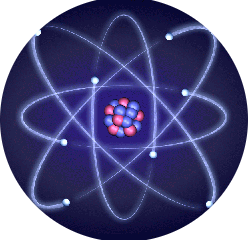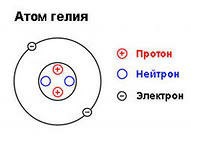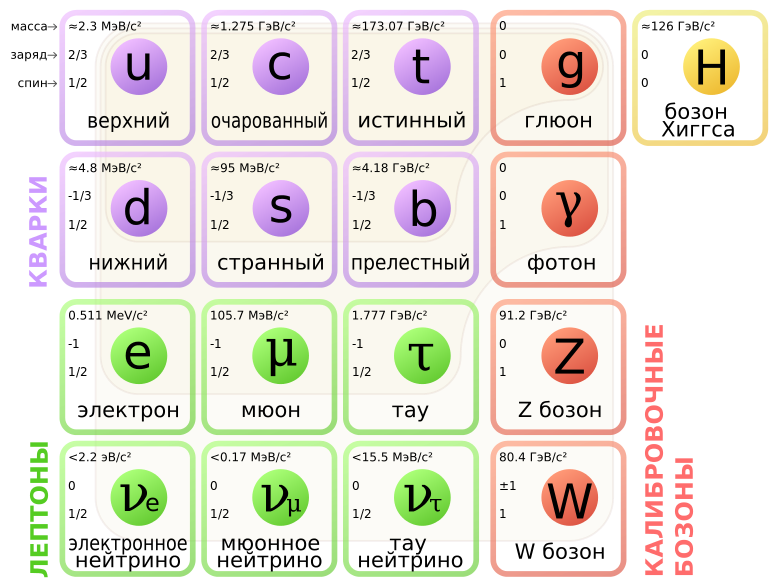Standard Elementary Particle Model for Beginners
 “We are wondering why a group of talented and dedicated people is ready to devote their lives to chasing such tiny objects that you can’t even see? In fact, the studies of elementary particle physicists show human curiosity and a desire to find out how the world we live is arranged. ”Sean Carroll
“We are wondering why a group of talented and dedicated people is ready to devote their lives to chasing such tiny objects that you can’t even see? In fact, the studies of elementary particle physicists show human curiosity and a desire to find out how the world we live is arranged. ”Sean CarrollIf you are still afraid of the phrase quantum mechanics and still don’t know what a standard model is, welcome to cat. In my publication, I will try to explain the basics of the quantum world, as well as the physics of elementary particles, as simply and clearly as possible. We will try to figure out what are the main differences between fermions and bosons, why quarks have such strange names, and finally, why everyone wanted to find the Higgs boson.
What are we made of?
Well, then, we begin our journey into the microworld with a simple question: what do the objects surrounding us consist of? Our world, as a house, consists of many small bricks, which in a special way connecting, create something new, not only in appearance, but also in their properties. In fact, if you look closely at them, you can find that there are not so many different types of blocks, they just connect each other in different ways, forming new forms and phenomena. Each block is an indivisible elementary particle, which will be discussed in my story.
For example, let's take some substance, let it be the second element of the periodic table, inert gas, helium. Like other substances in the universe, helium consists of molecules, which in turn are formed by bonds between atoms. But in this case, for us, helium is a little special, because it consists of only one atom.

What does an atom consist of?
The helium atom, in turn, consists of two neutrons and two protons that make up the atomic nucleus, around which two electrons revolve. The most interesting thing is that only an electron is absolutely indivisible here .
An interesting moment in the quantum world.
The smaller the mass of an elementary particle, the more space it takes. It is for this reason that electrons, which are 2,000 times lighter than a proton, occupy much more space compared to the nucleus of an atom.
Neutrons and protons belong to the group of so-called hadrons (particles subject to strong interactions), and more precisely, baryons .
Hadrons can be divided into groups
- Baryons, which consist of three quarks
- Mesons that consist of a pair: particle-antiparticle
The neutron, as its name implies, is neutrally charged, and can be divided into two lower quarks and one upper quark. A proton, a positively charged particle, is divided into one lower quark and two upper quarks.

Yes, yes, I'm not joking, they are really called upper and lower. It would seem that if we discovered the upper and lower quark, and even the electron, then we can use them to describe the entire Universe. But this statement would be very far from the truth.
The main problem is that the particles must somehow interact with each other. If the world consisted only of this trinity (neutron, proton and electron), then the particles would simply fly through the vast expanses of space and would never gather into larger formations, like hadrons.
Fermions and Bosons
Long ago, scientists came up with a convenient and concise form of representing elementary particles, called the standard model. It turns out that all elementary particles are divided into fermions , of which all matter is composed, and bosons , which transfer various types of interactions between fermions.
The difference between these groups is very clear. The fact is that fermions need some space to survive according to the laws of the quantum world, and for bosons there is almost no need for free space.
Fermions
A group of fermions, as has already been said, creates visible matter around us. Whatever we see, created by fermions. Fermions are divided into quarks , strongly interacting with each other and locked inside more complex particles like hadrons, and leptons , which freely exist in space regardless of their counterparts.
Quarks are divided into two groups.
- Top type. The quarks of the upper type, with a charge of +2 \ 3, include: upper, charmed and true quarks
- Lower type. The quarks of the lower type, with a charge of -1 \ 3, include: lower, strange and lovely quarks
Leptons are also divided into two groups.
- The first group, with a charge of "-1", includes: an electron, a muon (a heavier particle) and a tau particle (the most massive)
- The second group, with a neutral charge, contains: electron neutrino, muon neutrino and tau neutrino
The question arises whether physicists will find a few more generations of particles that will be even more massive compared to the previous ones. It is difficult to answer, but theorists believe that the generations of leptons and quarks are limited to three.
Don't you find any similarities? Are both quarks and leptons divided into two groups that differ from each other by a charge per unit? But more on that later ...
Bosons
Without them, fermions would fly in a continuous stream through the universe. But exchanging bosons, fermions tell each other some kind of interaction. The bosons themselves practically do not interact with each other.
In fact, some bosons still interact with each other, but this will be discussed in more detail in the following articles on microworld problems.
Interaction transmitted by bosons happens:
- Electromagnetic , particles are photons. With the help of these massless particles, light is transmitted.
- Strong nuclear , particles are gluons. With their help, quarks from the nucleus of an atom do not decay into individual particles.
- Weak nuclear , particles - ± W and Z bosons. With their help, fermions spread mass, energy, and can turn into each other.
- Gravitational , particles are gravitons . Extremely weak microworld power. It becomes visible only on supermassive bodies.
Reservation of gravitational interaction.
The existence of gravitons has not yet been experimentally confirmed. They exist only in the form of a theoretical version. In the standard model, in most cases they are not considered.
That's all, the standard model is assembled.

The problems have just begun
Despite the
In order to understand the idea of using the Higgs boson, we need to turn to quantum field theory. In simple terms, it can be argued that the whole world, the entire Universe, does not consist of the smallest particles, but of many different fields: gluon, quark, electronic, electromagnetic, etc. In all these fields, slight fluctuations constantly occur. But we perceive the most powerful of them as elementary particles. And this thesis is very controversial. From the point of view of wave-particle duality, one and the same object of the microworld in different situations behaves either as a wave, or as an elementary particle, it depends only on how it is more convenient for the physicist observing the process to model the situation.
Higgs Field
It turns out that there is a so-called Higgs field, the average value of which does not want to tend to zero. As a result, this field is trying to take some constant non-zero value in the entire Universe. The field is an omnipresent and constant background, as a result of strong fluctuations of which the Higgs boson appears.
And it is thanks to the Higgs field that particles are endowed with mass.
The mass of an elementary particle depends on how strongly it interacts with the Higgs field , constantly flying inside it.
And it is precisely because of the Higgs Boson, and more precisely because of its field, that the standard model has so many similar groups of particles. Higgs field forced to make many additional particles, such as, for example, neutrinos.
Summary
What I have said is the most superficial concepts about the nature of the standard model and why we need the Higgs boson. Some scientists still deep down hope that a particle found in 2012 and similar to the Higgs Boson in the LHC was simply a statistical error. After all, the Higgs field breaks many beautiful symmetries of nature, making the calculations of physicists more confusing.
Some even believe that the standard model is living out its last years because of its imperfection. But this has not been experimentally proved, and the standard model of elementary particles remains the current model of the genius of human thought.
Only registered users can participate in the survey. Please come in.
Should I continue to write articles on the problems of the microworld?
- 92.9% Yes, such articles are needed. 795
- 6.4% No, even though such articles are needed, you explain the material incorrectly. 55
- 0.5% No, such articles are not needed. 5
